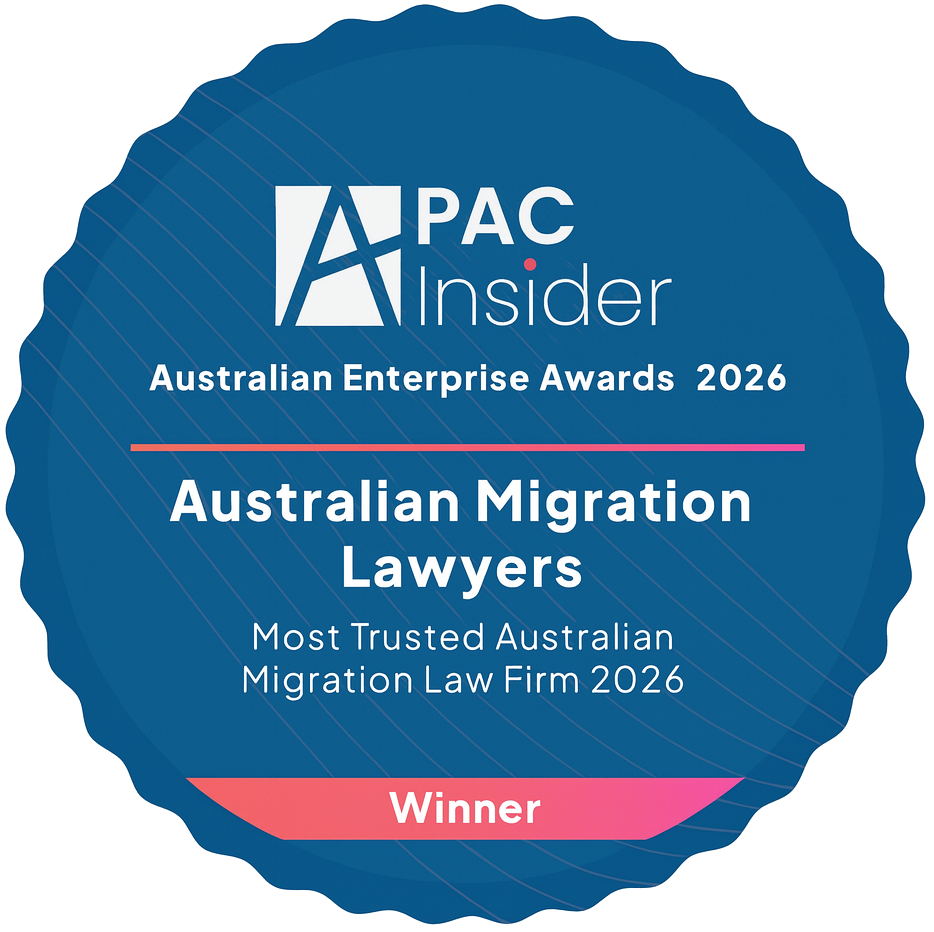Australia's largest independent migration law firm. Open 7 days! Book here.
Need help? We are available 7 days a week.

.webp)

Winner of Most Trusted Australian Migration Law Firm 2023-2026

Ranked 1st for migration law in 2023, 2024 & 2025

Ranked in the top migration lawyers 2023, 2024 & 2025

Ranked the best migration law firm 2024 & 2025
%20(1).webp)
While some visa applicants manage the process independently, the complexities of the process often lead to common errors while filing. How an application is prepared may influence how the application is assessed or managed by the Department.
If you apply for an Australian visa and plan to bring another person on board for assistance, you will need to fill out one of two crucial forms, Form 956 and Form 956A, to authorise them to act on your behalf. This article outlines the purpose of these forms and how to use them correctly.
Form 956 is used to appoint a registered migration agent, a legal practitioner, or an exempt person. The individual extends assistance to the visa applicant throughout the visa application process. This form formally establishes the authority of the appointed individual to liaise with the Department of Home Affairs (DHA) until the visa process is over.
On the other hand, a visa applicant may use Form 956A to appoint their spouse, a friend, a family member, or someone from the local community to handle all correspondence with the DHA on their behalf. The appointed individual is not authorised to provide legal advice, only to manage the communication between the applicant and the department. This communication can be regarding additional documentation or updates on the application's progress.
Although both forms are used to nominate a third party to act on behalf of a visa applicant, the kind of authority they can exercise differs:
If an applicant intends to manage the process independently, receiving all communications directly and preparing submissions themselves, then neither form is applicable.
However, if they decide to engage the services of a registered migration agent or a legal practitioner for immigration assistance, Form 956 will need to be used to formalise their engagement and give the appointed individual the necessary legal power to interact with the Department of Home Affairs on the applicant's behalf.
Similarly, Form 956A is helpful in scenarios where a visa applicant may face challenges receiving or understanding the Department's communications. This could be due to the applicant's limited English proficiency, frequent travelling, or unreliable access to email. Submitting this form ensures that information received from the Department is received and acted upon on time.
Form 956 or Form 956A is only required when a visa applicant wishes to have another person act on their behalf during the course of the application process. Therefore, the following individuals may be nominated to assist you based on the kind of assistance you seek:
These individuals are Australian citizens who hold a Graduate Diploma in Australian Migration Law and Practice and have passed the Capstone assessment. Migration agents are registered with the Office of the Migration Agents Registration Authority (OMARA) and are authorised under the Migration Act 1958 to provide immigration assistance to visa applicants. This assistance includes, but is not limited to, filling in an application form, translating or interpreting, or passing on information about an application.
Australian lawyers working with law firms, government agencies or as in-house counsel, who currently hold an Australian legal practising certificate (restricted or unrestricted) from their local jurisdictions or other states, can provide visa applicants with immigration assistance. Like registered agents, legal practitioners are also registered with regulatory bodies, which enables them to provide advice on the legalities involved in the visa process.
If a close family member, such as the spouse, parent, brother, or sister, is nominated via Form 956, they may assist with administrative aspects of the process but are not authorised to provide legal advice or charge a fee. By law, only a registered migration agent or a legal practitioner can charge a fee for immigration assistance.
On the other hand, nominating a family member or a friend via Form 956A means they are appointed as the authorised recipient for correspondence from the Department of Home Affairs. You are allowed to appoint only one recipient for a given visa matter, to whom the Department will send all communication related to the visa application or cancellation.
Completing both forms accurately is essential to prevent delays in visa processing. Each form is divided into three sections (Parts A, B, and C). Follow the steps below to complete each form correctly:
Note: To nominate a registered migration agent, a legal practitioner or an exempt person, complete Parts A and C. If an existing appointment is being cancelled, Parts B and C need to be completed.
Note: To appoint an authorised recipient, complete Parts A and C. If an existing appointment is being withdrawn, Parts B and C need to be completed.
Applicants often make common errors when completing these forms, which may result in processing delays:
Once you have accurately completed the Form 956, the next step is to submit it to the Department.
If you send your visa application online through the Department portal, you simply scan and upload the completed and signed Form 956 or Form 956A in the PDF format along with your application. For those using the paper-based process, include the completed Form 956 or Form 956A with other application documents when mailing them in person to the relevant Department of Home Affairs office.
When you submit Form 956 or Form 956A, the Department will process it and update its records. Once the form is filed, all future communications regarding your visa application will be directed to the appointed representative or the authorised recipient.
The form you choose will depend on the appointed individual's role. If the person is providing immigration advice or actively handling the visa process, Form 956 will be required, but if their role is limited to receiving correspondence from the Department, Form 956A should be used.
Applicants must ensure that the correct form is used and completed accurately to avoid delays. If you are unsure about your application and need personalised assistance from a registered migration agent, our team can provide guidance on the appropriate documentation requirements and submission process.
Forms 956 and 956A are not mandatory for visa applications. They are only used when you appoint another person to manage the immigration process on your behalf. While Form 956A will only be required in the case of someone you appoint to handle Department correspondence, you will need Form 956 if the appointed individual is a registered migration agent or a legal practitioner.
Yes, you can. If you wish to switch from one representative to another, whether to another registered migration agent or legal practitioner, you can submit a new Form 956. The important thing here is that you inform the Department of any changes in writing so that they know to whom they should direct further communication.
Form 956 is intended for use when appointing a registered migration agent or a legal practitioner.